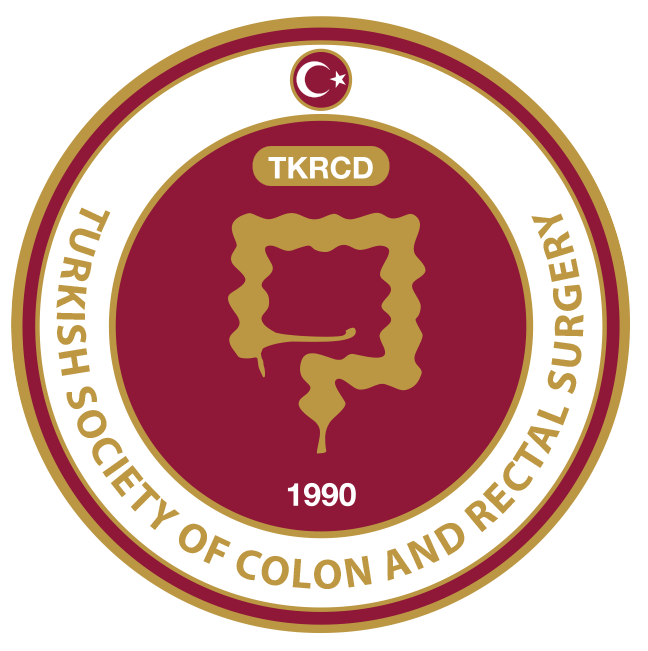ABSTRACT
Although it is a rare condition, traumatic colonic perforation has a significant morbidity and mortality rate. Especially in cases with sexual abuse, the patient may not give detailed information and this may cause delays in diagnosis and treatment. Here, we present a patient with acute abdominal findings who was diagnosed with traumatic colonic perforation intraoperatively. In cases with gastrointestinal perforation, traumatic colonic perforation should be kept in mind and patients must be asked about trauma.
Introduction
Foreign bodies inserted into the anal canal may cause complications in the rectum and sigmoid colon which require urgent intervention.1 Rectal foreign bodies can be encountered in the form of self-administered treatments for constipation and anorectal diseases, related to sexual abuse, in psychiatric cases, through accidents, and often used for sexual purposes.1,2 Diagnosis of pathologies caused by rectal foreign body can be delayed due to conflicting statements from patients and their relatives and inconsistencies with physical examinations.3 Here in, we present a case of sigmoid colon perforation detected in a patient undergoing emergency surgery for acute abdomen.
Discussion
Injury of the anorectal region or the presence of a foreign body in the rectum is often reported as forensic cases because they generally occur as a result of trauma, accidents, and sexual abuse. Cases of foreign bodies in the rectum due to attempted self-treatment have been previously reported. There is also a case reported in the literature with a psychiatric disorder (Munchausen’s syndrome).4
In 1984, J.A. Berry classified spontaneous colonic perforations into “stercoral” and “idiopathic” perforations. Stercoral perforations occur at or near the recto-sigmoid junction as a result of ischemic necrosis caused by hardened feces. Perforations associated with ischemia are round or oval in shape, while the perforations seen in idiopathic cases are linear.5 About 3.2% of all colonic perforations are stercoral.6 Idiopathic perforations are reported less frequently than stercoral perforations. In terms of prognosis, idiopathic perforations are better because there is less fecal contamination.7
Insertion of foreign bodies into the rectum is encountered more frequently in young and middle-aged men than in women. The purpose for young and middle-aged men is usually anal eroticism, while in older individuals it is done to alleviate constipation or for prostate massage.1,8 In the present case, the patient used a garden hose in an attempt to eliminate constipation and rectal prolapse.
Such patients generally tend to hide the truth when they present to the emergency department. They usually report abdominal pain, constipation, and complaints of anorectal pain and hemorrhoids with intermittent bleeding.1,8,9 In our case, the patient presented no findings other than clinical signs of acute abdomen syndrome.
There are reports in the literature of various complications associated with rectal foreign bodies, including rectal bleeding, rectal mucosal abrasion and tears, rectal inflammation, pararectal abscess and fistulization to neighboring organs, rectal perforation, and peritonitis.10 Despite detecting no injury to the anal canal or rectal area in our patient, we found a sigmoid colon injury causing peritonitis.
The clinical presentation of cases with colonic perforation differs in terms of the area affected and peritoneal irritation. Abdominal pain and distention are the most common symptoms. Diagnostic direct X-rays may show pneumoperitoneum in less than 10% of these patients. This can also be evaluated as normal, especially because the air is located within the retroperitoneal space or under the skin. Computerized tomography is particularly helpful in such cases.11,12 Computed tomography using triple or dual contrast media can be used to monitor patients, especially those who are being followed without surgery.13
There is a lack of consensus regarding the treatment of patients with pneumoperitoneum and suspected colonic perforation. Clinician experience and site of perforation are important when monitoring treatment in these cases. They can be managed both operatively and nonoperatively.14,15 Although treatment of colonic perforations traditionally required open surgery, in recent years there has been a trend toward nonoperative follow-up in selected cases with laparoscopic interventions as necessary.16
The patient discussed here presented to the emergency department with clinical picture of acute abdominal syndrome. Because he did not give sufficient information about the events leading to his condition, the clinical findings were evaluated as upper gastrointestinal system perforation. This case illustrates the need to obtain a more detailed history in the emergency department, especially in patients with psychological problems and clinical presentation of acute abdomen.



